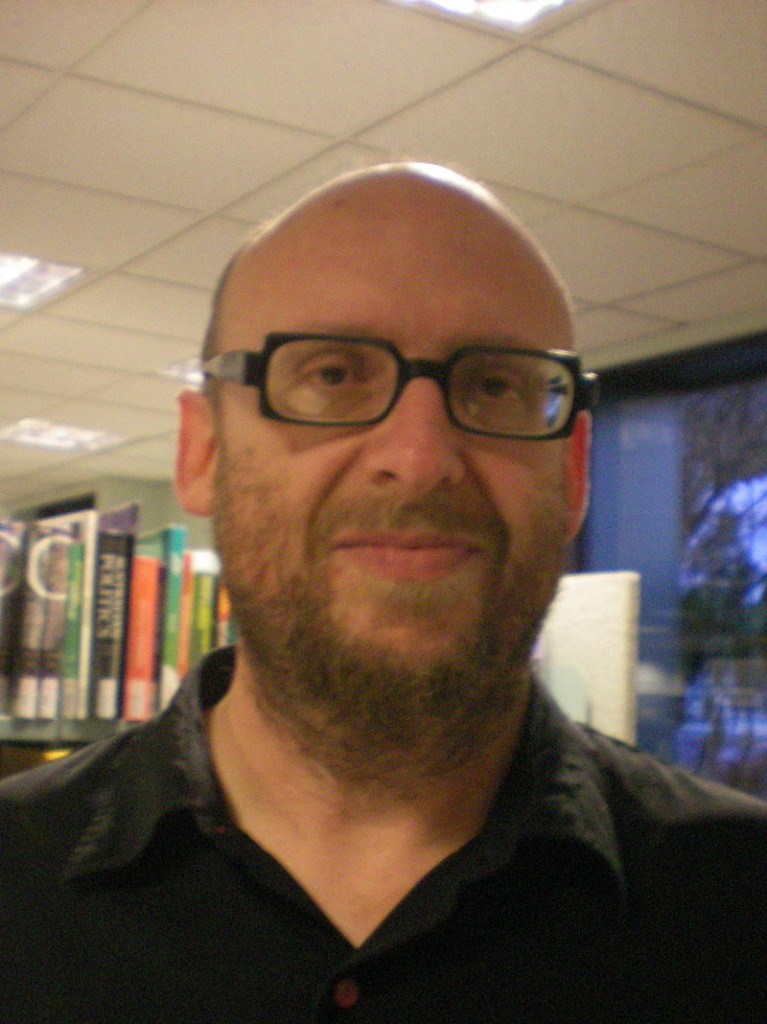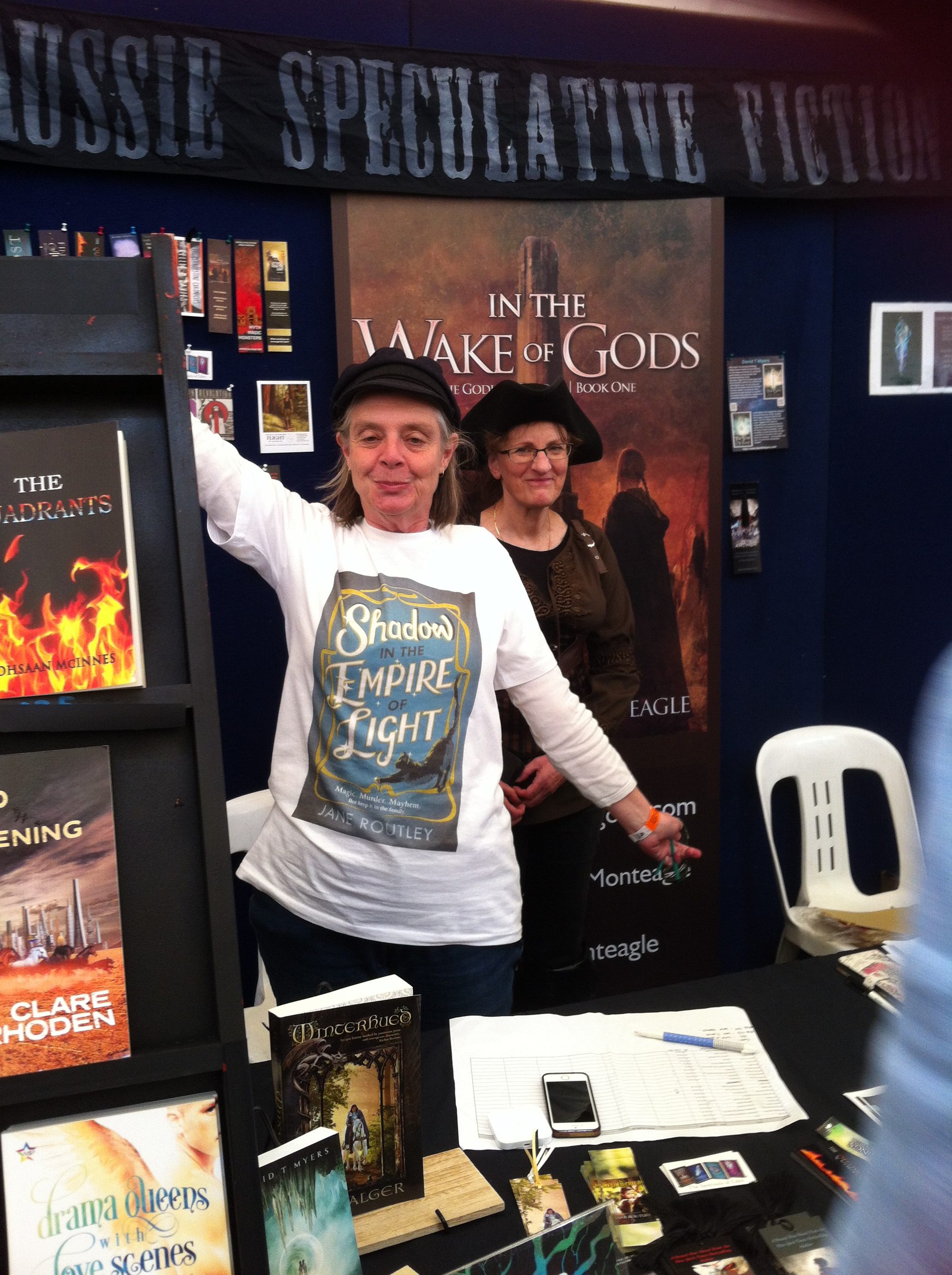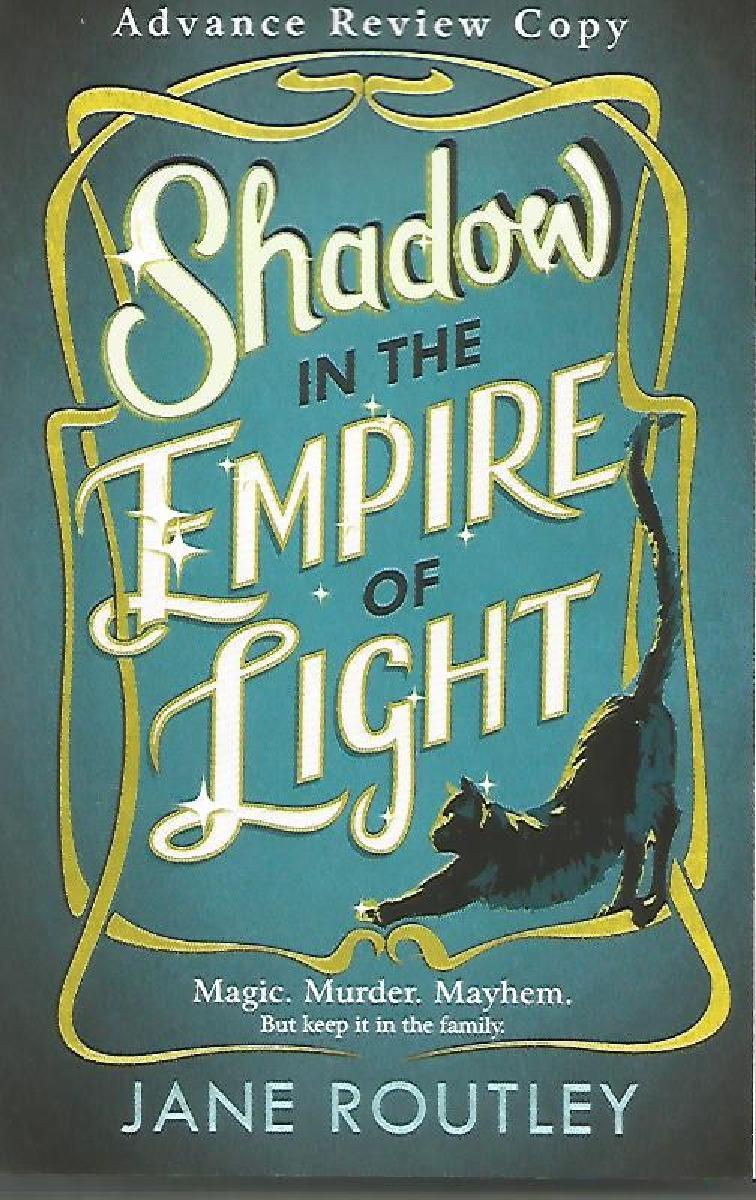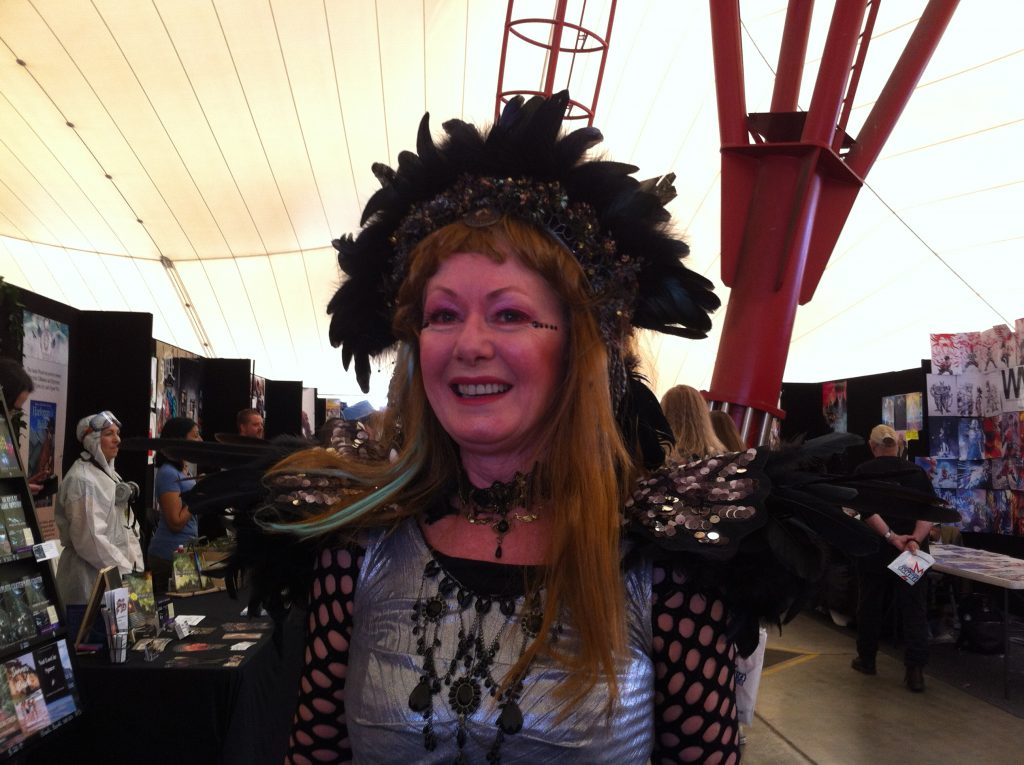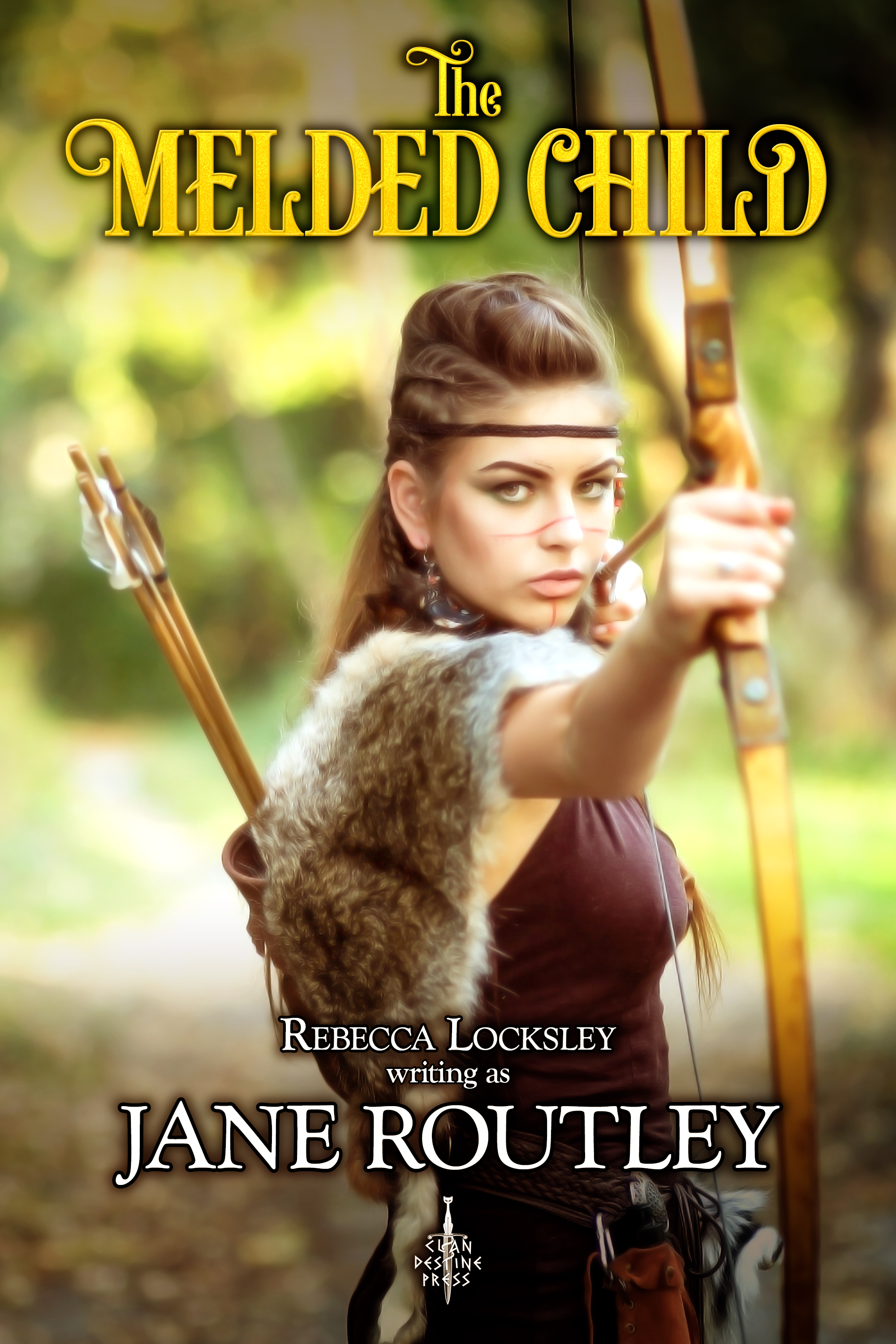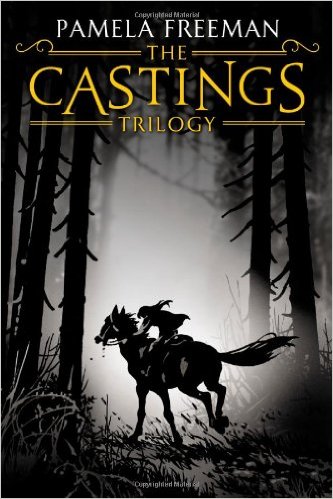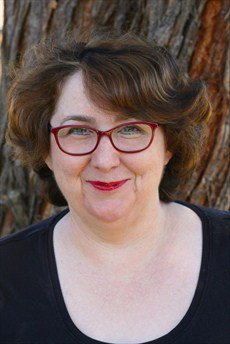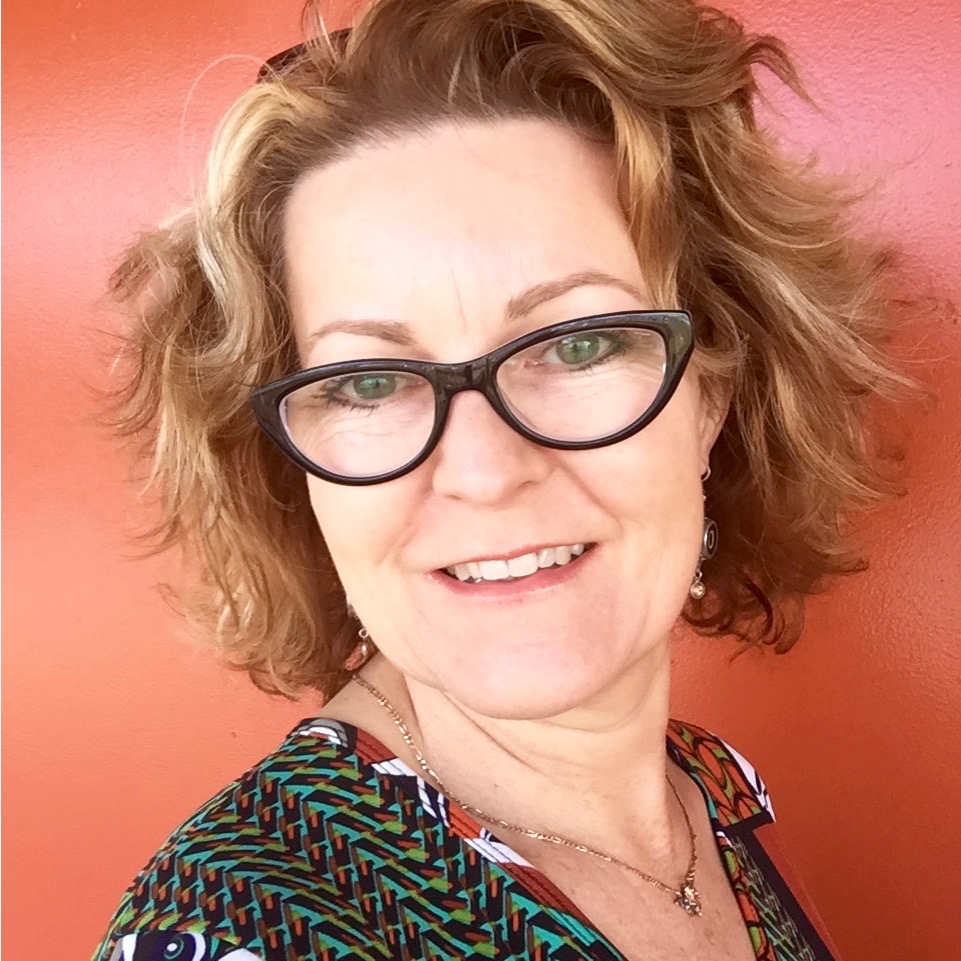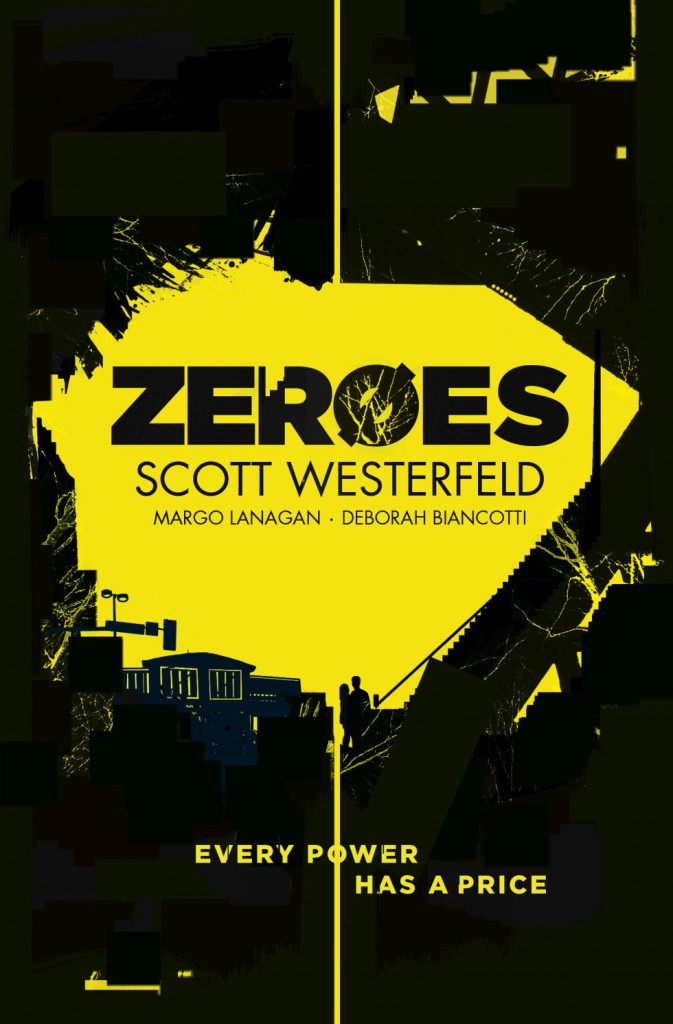writing
Shadow in the Empire of Light – Cover Reveal
Woo Hoo!
The lovely people at Solaris Press have sent me a proof of my new book.
Shine’s life is usually dull: an orphan in a family of powerful mages, she’s left to run the family estate with only an eccentric aunt and a telepathic cat for company.
But when the family descend on the house for the annual Fertility Festival, Shine is plunged into intrigue; stolen letters, a fugitive spy and family drama mix with an unexpected murder, and Shine is forced to decide both her loyalties and her future.
Shadow in the Empire of Light is due out in August
Wow!

Here is the wonderful Sandy from Geelong, costumier extraordinaire, dressed up as Yanimina Tari, The War Raven, one of the main characters in The Three Sisters and The Melded Child. How cool is that! You know you must be doing something right when someone cosplays one of your characters at Supanova.
Thank you so much Sandy. You made my week.
I’d love to acquire the costume when you’re finished with it.
I’m on tour (virtually)
The fine people at Goddess Fish promotions have organized this virtual book blog tour and here are the places and dates. Looking forward to meeting lots of readers.
There’s a $25 dollar Amazon to be drawn and won by one lucky commenter.
So do yourself a favour!!
June 25: Mythical Books
June 25: Straight From the Library
June 26: Kit ‘N Kabookle
June 26: Stormy Nights Reviewing and Bloggin’
June 27: Rogue’s Angels
June 27: Fabulous and Brunette
June 28: T’s Stuff
June 28: Author Deborah A Bailey
June 29: Edgar’s Books
June 29: Laurie’s Paranormal Thoughts and Reviews
July 9: The Reading Addict
July 9: fundinmental
July 10: Deal Sharing Aunt
July 10: Jazzy Book Reviews
July 11: Thorntonberry Shire Press
July 11: Sapphyria’s Books
July 12: Long and Short Reviews
July 12: Author C.A.Milson
July 13: Locks, Hooks and Books – review
July 13: Sharing Links and Wisdom
New Book coming!! The Melded Child
The new novel of the Archipelago and the Tari.
Coming out April 7
In Print on Demand from Bernarra Press through Amazon and in ebook from Clan Destine Press
An ancient prophecy has come to pass.
The peace negotiated by the Tari has held firm for ten years, but a new Demon Master is rising.
When Yani the Raven is kidnapped, sorceress Marigoth and her companion Ezratah are drawn into a trap set by a brutal necromancer and his insane sister.
Meanwhile Elena Starchild’s daughter Alyx, heir to the throne of the Mori, finds herself wounded and on the run in a forest full of dark magic; and in the company of her bitter enemy.
Can the insular Tari, dreaming in the secret land of Ermora, be awoken before the demon fire consumes them?
And can a Melded Child bring harmony before it is too late?
Pamela Freeman
What is CLI-Fi?
This week I asked Cat Sparks about to define (Climate Change fiction) in an interview in SFFWorld.
Cat Sparks is a multi-award-winning author, editor and artist whose former employment has included: media monitor, political and archaeological photographer, graphic designer, Fiction Editor of Cosmos Magazine and Manager of Agog! Press. In 2012 an Australia Council emerging writers grant enabled her to participate in Margaret Atwood’s The Time Machine Doorway workshop in the U.S. She’s in the final throes of a PhD in climate change fiction. Her short story collection The Bride Price was published in 2013. Her debut novel, Lotus Blue, will be published by Talos Press in February.
Margo Lanagan – Interview
Margo Lanagan is the internationally acclaimed multi-award winning Australian author of dark fantasy novels and short stories. Her latest book, Zeroes is a joint work with Scott Westerfeld and Deborah Biancotti
Tell us about Zeroes.
ZEROES is a YA trilogy about six teenagers, each of whom has a different socially based superpower. Which means, the bigger the crowd around the character, the greater their power—and the bigger the mess if they stuff up. And they do stuff up, regularly. Each (short) chapter is told from one of the six points of view. Compared to the average solo Margo Lanagan story it’s pretty helter-skelter, and not so dark—although it seems to be gradually darkening as the series goes on. Maybe I’m having more influence than I think!
How did the three of you manage the creation of a single book together? What was the process?
Each of the three authors wrangles two of the characters. We get together for a few days to plot out each book, then scatter to our respective homes (e.g. Scott is spending most of this year in New York) and write up our chapters. Then comes the fitting of those chapters together, which entails a lot of rewriting, but also kicks the ideas into new dimensions of weird and intense.
What initially inspired you to write about these young superheros? Can you focus on a particular moment?
I wasn’t present at the very beginning—I was a late ring-in. But this is how I’ve heard it went: Scott had had the idea for one of the characters, Scam/Ethan, for a very long time. Ever since he was a teen himself and wishing he was the kind of kid who always knew the right thing to say in any given situation. He’s also got a lot of mates who were involved in writing for film and television, and he’s always been envious that they had a roomful of people to bounce ideas off and share the load.
Deb had just done a workshop at AFTRS (Australian Film Television and Radio School) on writing for TV, and she was pretty interested in the TV Writing Room model too. They got to talking, and wondered if that model could be used to generate a co-authored novel. Scott tossed Scam/Ethan into the mix and they started chewing over the crowd-sourced superpowers idea.
They invited me to join them when they realised that two people did not a Writing Room make. By then they had a few more of the superpowers worked out—but we started out by sitting around in bars dreaming up the rest and wondering how this collaboration might work. A few months in we started writing—a year later we delivered the first book. Now the second is written—due out October in Australia—and we’re putting together Book 3.
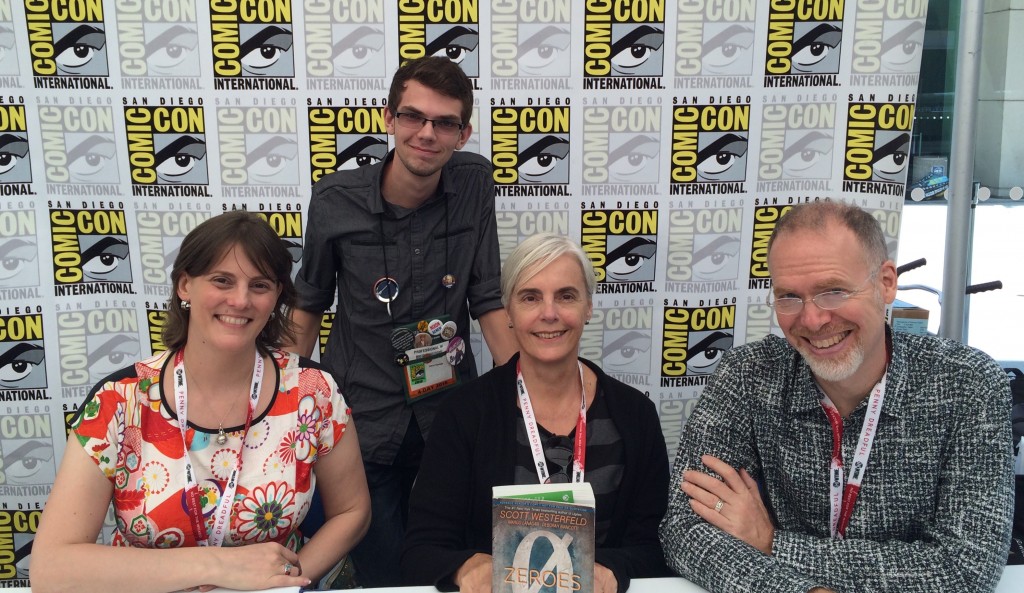
What else are you currently working on?
I’ve got three short stories on the boil, which are going to be added to a best-of collection coming out from Allen & Unwin next year.
How do you start out with your stories? In the middle, beginning or end?
I start at the beginning, mostly, but I need to have some idea of where a story’s headed, to keep it moving. Once I reach that end point, sometimes I realise it’s not very climax-y, or, going on what I’ve already written, I can push the action a little bit further and make it more interesting for myself.
Then there are other stories that don’t present themselves so tidily. Some have to be built up all out of order, from little mosaic pieces. Some can only be completed after the first four attempts have cleared some non-functional ideas from my head and I’ve gone desperately searching in the undergrowth for something else that might work. Some have to be fully drafted, put aside for an unpredictable amount of time, and returned to with a different mindset.
What’s your writing process for your solo books? Do you throw a lot away? Do you write every day? Are you a planner or do you fly by the seat of the pants?
I throw a lot away. A lot. With Tender Morsels and Sea Hearts I rewrote heaps after both editorial passes. It felt like a process of excavation, as if each round of questions asked of the novel gave me permission to break up what I’d done and dig deeper to find the real heart, the point of the thing.
I write every day except when I don’t. There are times when it makes sense to write every day. Times like when you’re nailing down a first draft. Or when you’re revising and you know where you’re going. Or when you’re nutting out a complex problem and need to keep going while you’ve got the whole complex structure of the novel uploaded into your brain.
Then there are times when you’re stale and bored with your own voice and it’s best to go out and be in the real world for a while, to exercise and travel and take in other people’s words (and pictures, and music, and actions). Every writer has to work out their own rhythm for themselves. Don’t write every day if it turns writing into a chore.
I’m a very rough planner. For a novel I start with a plan simple enough to keep in my head without writing it down. I throw a bunch of scenes at that until I feel as if something interesting is forming, then I rehearse a bunch of different plans to see how I might bring all the scenes together. And I repeat that pattern, if it could be called anything so coherent, jumping from pantsing (just going for where the energy is) to planning (when things need reining in) until something like a complete story seems to emerge. Then I send it to the editor, and they go “Yay!” in some places and “Wha—?” in others and I plan-and-pants my way through answering their questions.
Your work often seems to be focused on gender relations. Has this always been an interest and were you able to explore it in your early teen romance writing as well?
Not so much an interest as a site of rage and fascination. And God no, there was no proper exploration of gender relations in the teen romances. Only the merest touch of feminism-lite could be seen there, on the way to the happy-ever-after ending.
Probably the gritty-realist YA books I published in the mid-90s (The Best Thing and Touching Earth Lightly, now available as e-books) were me at my most I-will-now-change-the-world confident, although Touching Earth Lightly has an unfortunate plotline where the sexually active girl dies. Since then I think I’ve wised up as to how entrenched the patriarchy really is in our and other societies.
Still, I have hope. Germaine Greer once said “Women have very little idea of how much men hate them.” Well, now, because we have the internet, it’s being made abundantly clear to us, and to some appalled men, how hated we are. And isn’t it always useful when your enemy identifies himself?
How do you go with social media? What do you do to increase interest in your work and how much time do you spend on it? Any tips?
I go with social media as far as I enjoy it. That means at the moment that I’m on Twitter and Facebook. I think we can say I don’t maintain my own blog any more.
Leading up to and crescendo-ing slightly after pub date, I repost any buzz that I catch sight of, and write a lot of guest blog posts and do a lot of interviews. I try not to let either account be totally taken over by publicity.
That’s my tip about using social media—don’t be seen to be “using social media”. Stay human out there; grumble and joke about other stuff in between pointing people to guest blogs and cover reveals. Naked authorial neediness is not a pretty sight.
What 3 artworks (books, music, visual arts, films) have most inspired you?
I don’t think I can narrow it down to 3, so I’m just going to blast you with some visual artists: Louise Bourgeois, Linde Ivimey, Goya, Lucy Culliton, and those mad giant landscapes by William Robinson. Oh, and Scott and Deb seem to think my teenage crush on Mervyn Peake’s Gormenghast trilogy might explain a few things.

Adam Browne – Interview
If you want to go somewhere you’ve never gone before – try Adam Browne’s writing. I’ve plunged through the solar system in glorious adventure with Cyrano De Bergerac in Pyrotechnicon, watched a wonderful animation by Adam Duncan based on one of Adam’s short stories called The Adjustable Cosmos (Hapsburg Emperors in the stars) and now I’m all prepared for the launch of his next book The Tame Animals of Saturn on June the 9th.
Adam, tell us about the Tame Animals of Saturn https://www.facebook.com/events/214355685622863/
It was inspired by the writings by and about Jakob Lorber, a 19th Century Austrian mystic who was given to know the animals and plants of the Solar System. It’s richly illustrated.
I hope to revive interest in him, not as a Christian or a theosophist – he was both – but as a beautiful and tireless fabulist.
What was your initial inspiration for the book?
Thirty years ago, in The Book of Imaginary Beings, I read of Lorber’s ‘Leveler’. Borges writes with great dry wit of the immeasurable service the Leveller does man. Its pyramidal legs are made by God to stomp out roadways in preparation for the tarmac-layers and so on. It’s only with difficulty that I acknowledge there might be some people who aren’t immediately captivated by things like this. Lorber has stayed with me ever since. The book was a side-project, but it was one I had to do.
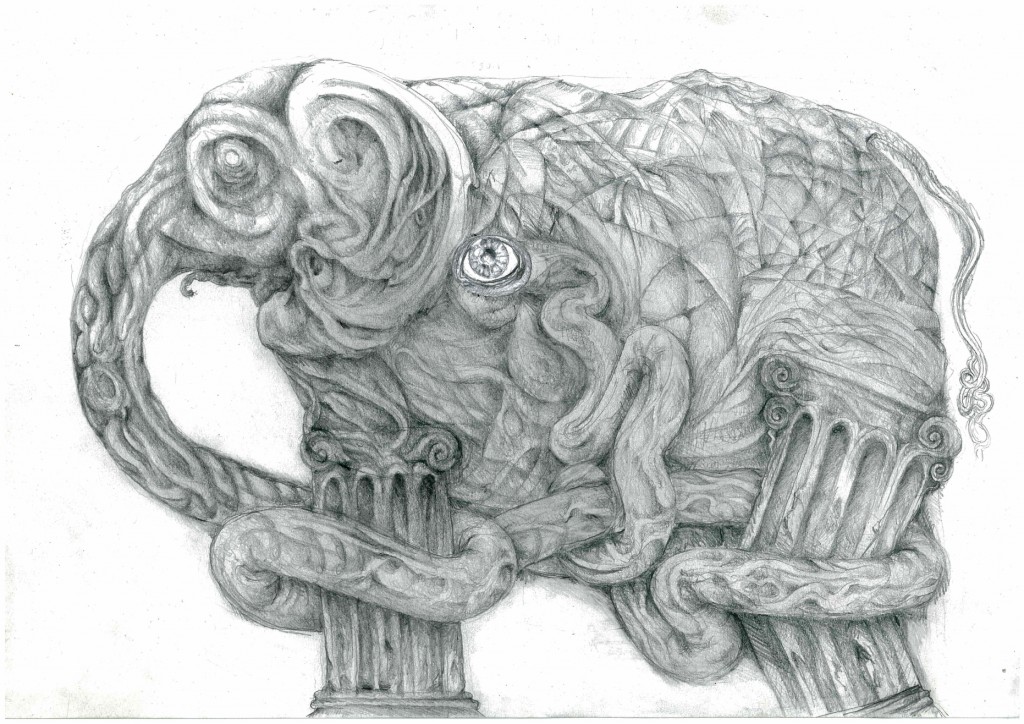
You love to explore the odd laneways of speculative fiction. How do you find your way into these laneways?
When I was young, science fiction seemed to be about freedom. There seemed to be few rules – just a playground for ideas. I remember being disappointed when a writer or filmmaker borrowed from elsewhere.2001: a space odyssey was a model of originality, but rather than copy its example, filmmakers copied the film itself. It’s still happening now, likely under the guise of homage – but it’s antithetical to the whole sf ethos. Anyway – I dunno – I don’t see my writing as weird anyway, to be honest. I haven’t admitted this before, but I was surprised when people called my stories New Weird or whatever. For me, they were just the stories I wanted to write.
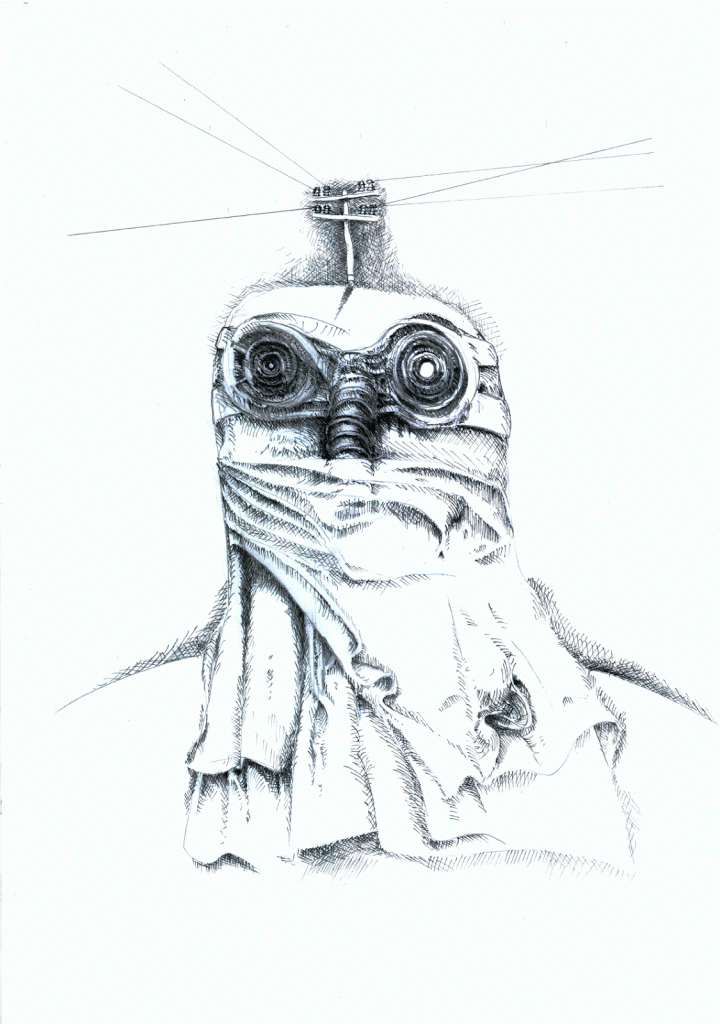
What’s your writing process? Do you throw a lot away? Do you write every day? Are you a planner or do you fly by the seat of the pants?
My stories start at the start. There’s some initial idea – with an old one, for instance, called Neverland Blues, it started with the idea that Michael Jackson had fled his problems by turning himself into a spaceship. The story accreted from that. I write from the seat of my pants. And yes, I throw a lot away. Each story has a discards file which is inevitably much bigger than the story itself.
How do you go with social media? What do you do to increase interest in your work and how much time do you spend on it? Any tips?
Yeah social media. It’s such an easy way to advertise your work but maybe not so effective. Still, although there must be better ways to do it, the urge to become skilled in marketing remains a velleity.
Facebook is my guilty obsession. At its best it’s a wunderkammer, and a way for me to vent excess imagination and gags – also an excellent way to resume or maintain friendships … but I suspect the reason I find it so seductive is because it’s all about me. Almost everything I read on it is in some way related to something I’ve already said. That’s the way it’s designed. It’s the equivalent of those kids’ books where your child’s name is inserted into the text. It enables my narcissism.
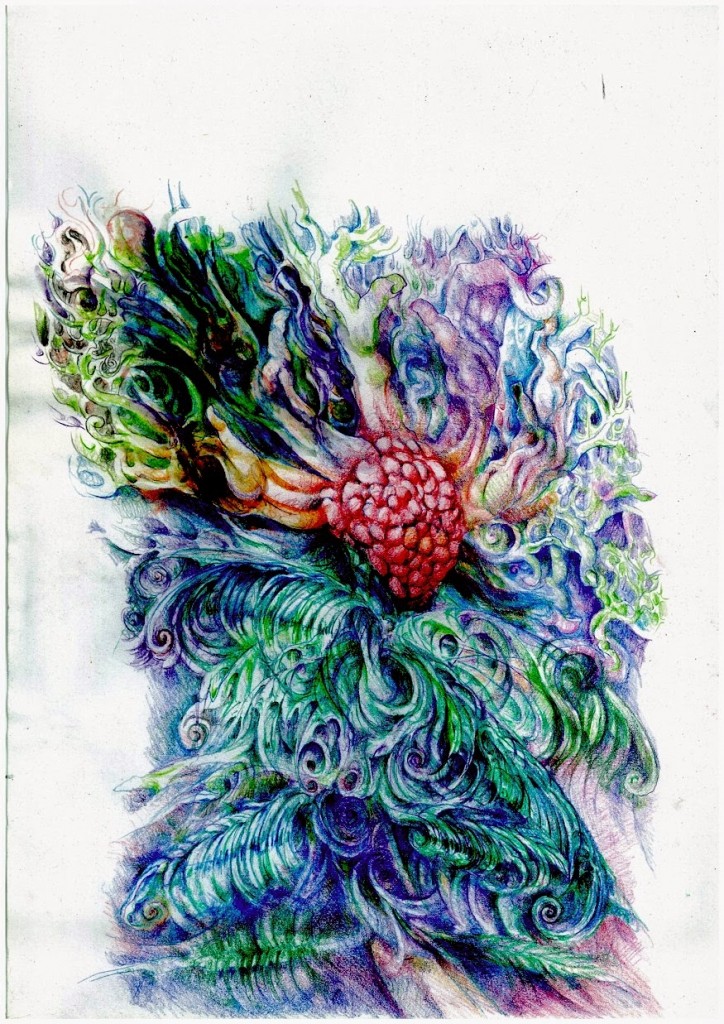
What artworks (books, music, visual arts, films) have most inspired you?
I’ve been thinking recently about how 80s art-pop was a sort of gateway drug into the arts. Devo, Talking Heads etc etc. I remember being delighted by a performance art piece that made its way onto Countdown – a pingpong game with people’s heads sticking out of the table, players in whimsical dress, a bit of a ceremonial vibe. It wasn’t the piece so much as that such stuff was possible… My father took me to all the great art films of the 70s too. 2001, Satyricon, Tarkovski etc etc. There was 2000AD, the British comic antho – then Heavy Metal magazine – and Raw. There was the French comic book artist Moebius. And Fantastic Planet – then the art of Roland Topor, who designed that film – I’m afraid I’m just listing the usual suspects here – in which case I might as well mention PK Dick, whom I discovered when I was 15, on a trip to the Northern Territory: the first story of his I read was ‘Nanny’. Such a gem. It’s hard to find writers these days who delight me as much as he did. Martin Amis is one, but I have to be careful not to copy his style. Another usual suspect: WS Burroughs – a ‘writer of good bits’, as Amis called him – for me, the good bit, the inspiring bit amid the dross, was the vignette with the Sailor, in the bar, an astronaut, it felt like, purchasing a drug stored in dull grey tubes of lead, cracking it open, his face melting to absorb it…
And now for the tabloid question. What is your relationship with Bessie Bottomley, Librarian extraordinaire? https://www.facebook.com/profile.php?id=100009898788233
I find Bessie Bottomley to be very adept at satisfying my holds.
The Tame Animals of Saturn is a available from http://www.peggybrightbooks.com/new/
Website http://adambrowne.blogspot.com.au/
Facebook https://www.facebook.com/ontogeny.recapitulates.phylogeny
Wikipedia https://en.wikipedia.org/wiki/Adam_Browne
